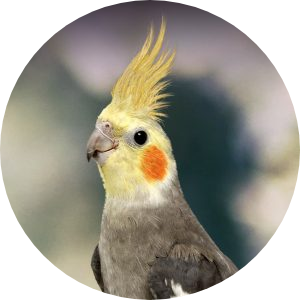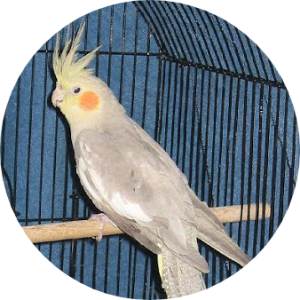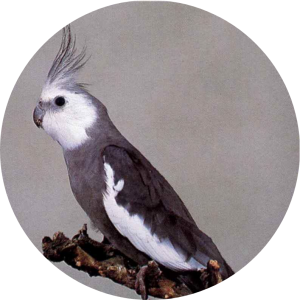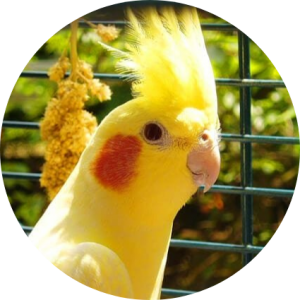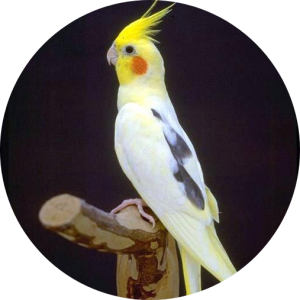COCKATIELS
Table of Contents
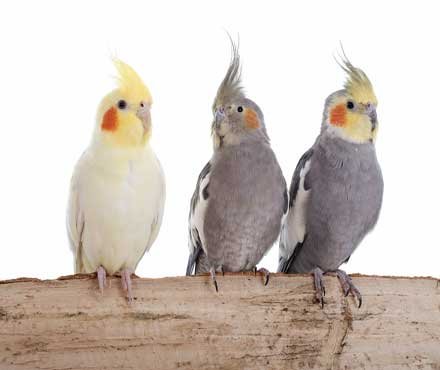
Description of Cockatiel:
The cockatiel conjointly called weirdo bird, or quadrillion, could be a bird that’s a member of its own branch of the parrot family endemic to Australia. area unit|they’re} prized as house pets and companion parrots throughout the planet and are comparatively straightforward to breed. As a caged bird, cockatiels area unit second in quality solely to the Melopsittacus undulatus.
The cockatiel is that the solely member of the Nymphicus. it had been antecedently thought of a crested parrot or little cockatoo; but, more modern molecular studies have allotted it to its own taxonomic group, Nymphicinae. It is, therefore, currently classified because the smallest of the Cacatuidae (cockatoo family). Cockatiels area unit native to Australia, favoring the Australian wetlands, scrub lands, and bush-lands.
The cockatiel’s distinctive erectile crest expresses the animal’s spirit. The crest is dramatically vertical once the cockatiel is surprised or excited, gently oblique in its neutral or relaxed state, and two-dimensional on the brink of the pinnacle once the animal is angry or defensive. The crest is additionally control flat however protrudes outward within the back once the cockatiel is making an attempt to look beguiling or sexy. In distinction to most cockatoos, the cockatiel has long tail feathers roughly creating up half its total length. At thirty to thirty three cm (12 to thirteen in), the cockatiel is that the smallest of the cockatoos that area unit typically larger at between thirty and sixty cm (12 and twenty four in).
Cockatiel Life Span:
The cockatiel’s period in captivity is usually given as sixteen to twenty five years, although it’s typically given as short as ten to fifteen years, and there area unit reports of cockatiels living as long as thirty two years, the previous confirmed specimen rumored being thirty six years old. Diet and exercise area unit major determinant factors. If fed properly a cockatiel will live up to twenty years.
Cockatiel Diet:
A well-balanced cockatiel diet consists of:
• Specialized pellets ought to frame sixty to seventieth of diet, and contemporary vegetables and fruits and little amounts of fortified seeds.
• Clean, fresh, filtered, chlorine-free water, modified daily.
• Do not feed birds avocado, fruit seeds, chocolate, caffeine or alcohol as these will cause serious medical conditions. Avoid sugar and high fat treats.
Cockatiel Feeding:
Things to recollect once feeding your cockatiel:
• Fresh food and water should be offered.
• Vegetables and fruits not devoured at intervals a number of hours ought to be discarded.
• Treats shouldn’t exceed 100 percent of total food.
Cockatiel Housing:
• Cockatiels acclimatize well to average house temperatures, to not drop below 65°F or to exceed 80°F; take care of maximum temperature changes. The home ground ought to be placed off the ground in a part that’s well-lit and aloof from drafts.
• A home ground more or less 24″W x 24″D x 30″H, with metal bars spaced no larger than 1/2″ apart, makes a decent home for one cockatiel. it’s best to produce the most important home ground doable.
• Perches ought to be a minimum of 5″ long and 1/2″ in diameter; a range of perch sizes to exercise feet and facilitate forestall inflammatory disease is usually recommended.
• A metal grate over the faces receptacle can keep the bird aloof from faces; line the droppings receptacle with home ground paper or acceptable substrate for easier cleanup. To avoid contamination, don’t place food or water containers beneath perches.
• Cockatiels is unbroken alone to bond with pet parent or in pairs to bond with one another. differing types of birds shouldn’t be housed along.
• Birds ought to be liberal daily by the pet parent.
Behavior of Cockatiel:
• Cockatiels area unit best-known for mimicking repetitive sounds and noises.
• Bond simply with their human companions.
• Parent-raised cockatiels would force it slow to acclimatize to human handling.
• Provide search toys, which give necessary mental stimulation.
Habitat Maintenance of Cockatiel:
• Clean and clean the home ground and perches frequently with a third bleach solution; replace substrate or home ground liner weekly or a lot of usually PRN.
• Replace perches, dishes, and toys once worn or damaged; rotate new toys into the home ground frequently.
• Ensure that there aren’t any home ground elements or toys with lead, atomic number 30 or lead-based paints or galvanized elements as these will cause serious medical problems if eaten by your bird.
• Do not use plenty of cleanup agents around your bird because the fumes is harmful. it’s suggested to use a natural cleanup product.
Grooming & Hygiene of Cockatiels:
• Provide filtered, chlorine free, lukewarm water frequently for bathing; take away the water once done. As another, mist the bird with water.
• Clipping flight feathers, once done properly, will facilitate forestall injury or escape; consult associate degree cranial doctor on what’s best for your bird.
• Nails ought to be cut by a professional person to forestall injury to the bird.
Health:
Signs of a Healthy Cockatiels:
• Active, alert, and sociable
• Eats and drinks throughout the day
• Dry nares and bright, dry eyes
• Beak, legs and feet traditional in look
• Clean, dry vent
• Smooth, well-groomed feathers
Health issues Of cockatiel:
• beak swelling or accumulations
• fluffed, plucked, or farcical feathers
• sitting on floor of home ground
• wheezing or coughing
• runny or discolored stools
• favoring one foot once not sleeping
• eye or nasal discharge
• red or swollen eyes
• loss of appetite
What is the Price of a cockatiel?
For the quality cockatiel parrot, you’re probably to pay around $150. However, these cockatiel parrot costs will vary from $80 to $250 and depend on the breed, age, mutation, health, and temperament of the bird.
TYPES OF COCKATIELS
